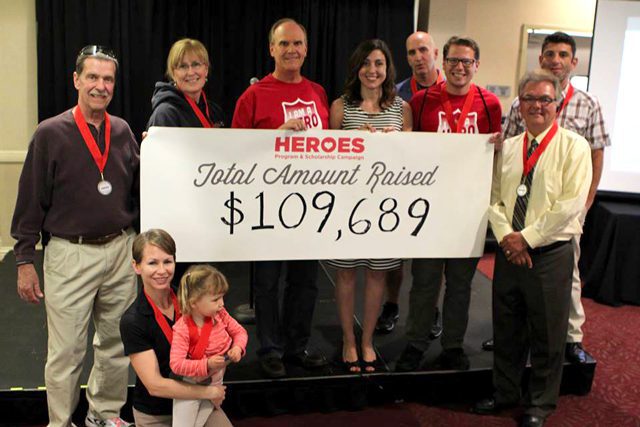by Bill Virgin –
Long before Krispy Kreme arrived on the scene, an American organization was synonymous with doughnuts.
Now, with the help of a third-generation Seattle baker turned business consultant, that organization wants to reclaim its legacy.
The organization, by the way, is not a company or brand name. It’s The Salvation Army.
The 138-year-old Christian social-service charity plans to begin sales of The Famous Doughnut through Fred Meyer stores in the retailer’s five-state territory, starting Jan. 5.
It’s believed to be the first time The Salvation Army has lent its name to a commercial venture. The organization will get not only a direct financial contribution from sale of the doughnuts, but also a way to market the organization’s heritage of “soup, soap and salvation” as well as its more contemporary efforts to combat “the unfair penalties of poverty: hopelessness, homelessness and hunger,” with services ranging from shelters for domestic-violence victims to drug- and alcohol-rehabilitation programs.
The idea owes its inspiration and implementation to someone who describes himself as “chief executive fanatic” of what amounts to a virtual doughnut company — Lee Stiles.
Stiles’ grandfather founded Ruth Ashbrook Bakery. In the 1970s and 1980s, the Capitol Hill wholesale bakery family donated its “overs” of the day’s production to a Salvation Army food pantry located across the street.
The family sold the bakery to Gai’s in 1989, and Stiles went on to work as a business consultant with Promega in Seattle, while continuing his association with The Salvation Army by serving on its Northwest advisory board. And that’s what led to his affiliation with an organization that has “a bigger history in doughnuts than I do,” Stiles says.
While touring the halls of The Salvation Army’s offices one day, he came across the poster commemorating The Salvation Army Lassies in World War I.
The Lassies were famed for serving doughnuts to soldiers in battlefront canteens — Lt. Col. Terry Griffin, Northwest divisional commander for The Salvation Army, says the Lassies were “the only female non-combatants allowed on the front lines.” For weary and homesick soldiers, the doughnuts were “soul food,” as The Salvation Army likes to describe them.
The legend was extended in World War II as the doughnuts were served at USO clubs (the United Service Organizations were created by The Salvation Army and five other entities).
Stiles remembers staring at the poster and thinking, “Darn, I wish I had a bakery.”
But since he didn’t, he set about creating one, using his contacts from his baking days. He enlisted ADM Milling for the baking mix. The original recipe had to be tweaked a bit, since it called for generous amounts of lard and the doughnuts weren’t made for shelf life. “They came up with a very simple formula with very few additives,” Stiles says.
The package was designed in-house by Megan Buck, using a Jan. 11, 1919, Saturday Evening Post cover illustration showing a Lassie offering a plate of doughnuts to a soldier (Curtis Publishing granted the rights to use the illustration). Frontier Packaging of Kent is producing the box that will hold the doughnuts on grocery store shelves.
For distribution, baking and sales, Stiles had an ally on The Salvation Army advisory board — Darrell Webb, the former head of grocery-store chain QFC, now the president of its parent, Portland-based Fred Meyer. The doughnuts will be made at the Fred Meyer bakery in Clackamas, Ore. Initial production will be about 1,000 six-doughnut boxes a week.
The doughnut will have a glaze, but will be somewhat irregular in texture so it won’t “look like it’s out of a foundry line,” Stiles says.
The Salvation Army will get a cut of revenue, and Stiles says doughnut sales could amount to as much as $500,000 a year. That’s not a huge amount for an organization whose budget in King County is $10 million, but even that amount would help cover operating deficits that have been a problem in tough economic times. And the marketing exposure may be even more important than the direct financial contribution. Says Griffin, “The goal is to market The Salvation Army to a clientele who may or may not know the story” — either of the Lassies or The Salvation Army.
While the doughnut packaging tells those stories on one panel, Webb says more than that will be needed to market the product and the story. “The number of people in the community who remember the work that was done in World Wars I and II may be somewhat limited,” he says.
But Webb also hopes sales of The Famous Doughnut can expand to QFC stores and beyond. “A lot of folks will be looking at how it performs,” he says. The idea is “very compelling. We hope it works.”
Stiles, not surprisingly, believes it will.
“It feels so right for The Salvation Army,” he says. “The brand equity we could unlock should be phenomenal.”











